- Home
- Don Pendleton
Canadian Crisis Page 13
Canadian Crisis Read online
Page 13
“Killer Five from Command, assume Delta One.”
“Roger, Command, Killer Five assuming Delta One.”
“Killer Two, give me a short count for radio fix!”
“Command from Scout One! Bandit is tracking north on niner-three!”
“Roger, Scout One! All Killers, scramble order! Close on Scout One, tracking north on niner-three from Point Delta!”
So there it was.
“Niner-three” was the two-lane blacktop running north from Golden.
“Point Delta” had to be Golden.
And Bolan knew that game plan. Someone with a military mind was running this “hunt and kill” mission. For one long and terrible moment, Bolan had to consider the inconceivable: could this be an actual military operation? Could the U.S. Army be out here on a hunt-and-kill against Mack Bolan? The answer to that was swift and positive: of course it could be! Bolan was, after all, one of theirs—officially listed a deserter. But that answer simply did not compute. Those “scout cars” were Mafia crew wagons—and the people in them were street soldiers—torpedoes—not U.S. Army soldiers.
It was, however, highly important that Bolan know the enemy. He did not engage in military duels with soldiers of the same side—no matter what their mission might be. It was another time to be thankful for the “special systems” built into the warwagon. He activated the optic scanners and remoted the display to the forward console, instantly acquiring a blurred telescopic image of the following vehicle. The “optic-lock” responded to Bolan’s command with a refinement of focus and a steady picture. The distance-measuring readout was indicating 400 meters—about a quarter-mile—and, yeah, it was the same vehicle he’d picked up on West Colfax—a big shiny Detroit black, fully crewed, armored—a crew wagon for damned sure.
His own speed had dropped to about 30mph as he fragged out his consciousness to cover all the needs of the moment—proper attention to navigation, surveillance of that chase car, intellectual assessment of the situation. The chase vehicle had slowed accordingly, maintaining the gap. He brought them closer, via the space-age optics, until the windshield of that heavy limousine filled the viewscreen of his console. Then he sent a command to the infra-red “augmentation” unit. The screen took on a ghastly reddish glow while the interior of that vehicle 400 meters to the rear became illuminated with invisible light to offer further secrets.
It was a positive make. No further doubts remained for the combat mind. The jump-seat limousine contained six scowling men, two in each seat row. Heavy weapons were in open display. The guy beside the driver was one Jingo Morelli, a cool operator out of Cleveland.
Bolan switched off the optics and punched in a geo-plot, consulting an automated index for the micro-frame desired then calling up the display for the area he was then traveling.
According to the plot, the Executioner was in damned lonely country. Sparsely settled, rugged terrain, damned few intersecting roads. As for present traffic on Route 93, there was none. Route 72 intersected at about halfway to Boulder, stretching toward the higher country. But Bolan was now betting that at least two of those “killers” were sitting up there at that intersection, awaiting the turkey shoot.
It was obvious now. They’d sucked him. This was no hastily conceived reaction to a Bolan contact. These guys had been waiting for that contact—expecting it, wanting it, prepared for it. Bolan had long known, of course, that he would trip one of these wires, one day. As time wound on and the war pressures mounted, the inevitability of this moment had become more and more certain. He’d long ago begun to suspect each contact with this enemy as a possible suck plan—a whirlpool that would grab him at the first casual touch and drag him to the depths of hell.
So okay. This one was obviously it.
Colorado was a Kill Zone. That was the only logical answer to the “supersoft” high country maneuvers. A spider’s web had been woven here, probably with strands reaching everywhere. Then the whispers had gone down to the jungle telegraph, whispers which were designed to reach the Executioner’s listening posts—soft whispers intended only to incite the curiosity of a Mafia-buster—and they’d sat back and waited for him.
Okay.
The knowledge came as almost a sense of relief.
Like the end of a long jungle night preceding a dawn jump-off, the battle itself became a welcome relief from the pressures of expectation.
These guys wanted a fight, huh?
So okay.
Bolan activated all of the warwagon’s combat systems and turned close attention to the geo-plot. He was approaching a series of rolling hills, upraised fingers of the Rockies lying upon the edge of the high plains, as good a spot as any for the death stand.
He awaited the moment when the crest of a hill momentarily separated him from the chase car, then summoned forth every horse available within the powerful Toronado engine to send the warwagon leaping away in the downhill stretch. The Detroit Black blinked into view at the top of that hill just as Bolan dropped behind the next one, and he could sense the consternation back there. The radio monitor quickly confirmed that feeling.
“Command, this is Chase One! He’s spotted us, I think. Running hard north, about four miles from the junction!”
“Stay with him, Chase One,” came the cool response. “All Killers, this is a go! Secondary units maintain station for reaction as required. Primaries close immediately! All units acknowledge!”
Bolan was counting the “killers” as each in his proper turn acknowledged the kill order. Good radio discipline, yeah. Military precision, sure. And it was quite a field army that was assembling out here on the Rockies’ eastern slope. By simple extrapolation, a hundred troops minimum—with possibly several times that number in a closer count.
But Mack Bolan had stopped counting.
The long jungle night had ended, and the warrior was ready to greet the dawn—at the edge of the world, or at least it seemed that way. He’d picked his spot in the spider’s web, and now he was off the highway and plunging across open country, running along a splayed finger and aiming for a knuckle overlooking and commanding all behind him.
The edge of the world, sure—but it wasn’t a jungle, and it was just the opposite of dawn. This was “big sky” country, with the snowcapped peaks backdropping the western edge and standing out with stark relief against the red skies of sunset. Off to the east lay green flatlands for as far as the eye could see, and from here the eye could see the median between night and day—the shadow zone way off beyond Denver where the direct sunrays lingered in retreat.
There would be no retreat here.
There would be confrontation and death here.
And Mack Bolan was ready … for both.
2: DEATH FORCE
Bolan’s bold initiative had succeeded in maneuvering the enemy into open country where the warwagon’s combat systems would find maximum effectiveness. There were no trees here, no structures—no obstructions and no cover of any type. They would have to come at him along the bare spine of the hill, in a steady climb. Moreover, with nightfall almost upon them, there would be no time for cute stratagems. The darkness would be kinder to the hunted than to the hunters. Behind him stood the beginning of the heavily forested slopes, wild country with dramatic topography and an infinite number of escape routes for a fleeing man.
Bolan was not fleeing, but the enemy could not be certain of that. If they meant to have him, then the burden was theirs to attack immediately. They would, he knew, do so.
And he was ready for them. The battle cruiser was heeled about with her bow to the only path of attack. All surveillance systems were operative. The roof-mounted rocket pods were raised, locked, and ready. Personal weapons and ready-belts were placed near the door in readiness for extra-vehicular activities.
The enemy, also, appeared ready. Their progress along the uneven terrain had been not quite as rapid as Bolan’s and apparently there had been some indecision regarding tactics during those first few moments of Bolan
’s crosscountry plunge. But now they had shored up their game plan and the movement had become entirely methodical.
The heavy crew wagon had proven unfit for this leg of the journey, evidenced by the unhappy complaint via Bolan’s radio monitors: “Command, this is Scout One. We’re out of it. That guy must have some kind of special suspension on that yacht.”
“Roger, Scout One,” was the crisp command response. “Assume rear plug and stand by for further assignment. Killer One—report!”
“Killer One, aye. We’re okay. Target is headed for the timber line. He’ll have to dump the vehicle there. We are closing with all speed.”
“Belay that!” the command voice instantly replied. “Advance with extreme caution only!” Then had followed a flurry of signals for positioning of units and coordination of the attack plan. Bolan counted five “killer” mobile units assembling down there while he finalized his own preparations for the battle—and when they came, it was straight out of the military book.
An apprehensive chill chased along his spine and once again doubt surfaced in the combat mind as the warrior scanned that enemy force through the high resolution focal fields of the optics system. Five vehicles, yeah—army field vehicles, dammit, done up in the traditional OD colors—troop carriers, grinding slowly along that gradual incline in a well-spaced formation, with squads of infantry advancing cautiously behind them, very authentic-looking infantry wearing combat fatigues and carrying very familiar weapons.
Hell—it could not be!
Bolan fought himself through an agonizing moment of inner conflict, then he sent his own powerful radio transmitter clicking toward the VHF military channel under monitor. His voice was cold and militarily precise as he spoke into the microphone. “Command Radio, authentication check. Identify your unit and authorization code for use of this radio channel.”
He counted off ten seconds before the response crackled through his monitor: “Roger, Circuit Control. Colorado Guard, Arapahoe Training Area. Field exercise in progress.”
“Authenticate!” Bolan snapped.
“Roger. Stand by.”
The VHF scanner immediately whirred and locked in to a terse command via that spectrum. “All units from Killer Command. Abandon communications primary—repeat—abandon primary. All further communications via this channel.”
Bolan grinned soberly, all doubts again dissolved. So it was all a cover. Those were not real troops down there. But they were going to damn soon feel that they were.
He “enabled” the rocketry, an electronic command which automatically combined the optics with the fire control system, superimposing an electronic grid with rangemarks on the viewscreen.
The Fire Enable signal began pulsing.
Targeting was entirely via electronic circuitry, foot-controlled and fired from a floor-mounted device which Bolan described as “a rock and press track/fire.” A supple ankle and steady foot were the chief requirements for this system. The launcher itself was built into the roof of the vehicle—a four-rocket pod which was normally retracted below a sliding roof panel for concealment. It was quickly raised and locked into the firing mode upon command.
The leading troop carrier was now centered in the range marks on Bolan’s viewscreen. He locked in the tracking system, receiving a Target Acquisition red glow on the screen, then banged his knee with a fist to send the hot bird streaking away from the roof. The horizontal column of fire sizzled across that short range and instantly erupted into a blinding ball of roiling flames and dense smoke, totally obscuring the target area momentarily as the thunderclap shook the air and staggered the very earth beneath it. Mangled bodies and dazed faces appeared briefly on the viewscreen as Bolan corrected left and again banged his knee. Another vehicle went into dramatic destruct and spread its parts about the battlefield as an awed voice with no military precision whatever gasped into the UHF monitor: “My God! Get those people out of there!”
“Belay that!” snapped another, the voice of command. “Standard infantry deployment! Move ’em out and get ’em down!”
Bolan sent them a third whizzer, this one impacting on the nose of a big carrier which had become trapped in the wreckage of the first two. He then disabled the rocketry—saving that final round for another moment—and quickly prepared for EVA. The initiative was his, for the moment, and he knew that his only hope lay in a manipulation of that confusion down there—to keep hitting them with hellfire and thunderation so that their stunned senses could have no chance to get it back together, to regroup, to reform the attack.
He had them reeling, and he knew it—and he knew that he had to keep them that way.
Hardly before the shockwave from that third rocket had dissipated, the magnificent warrior had draped a readybelt across each shoulder, thumbed a high explosive fragmentation round into the waiting M-79, and ventured forth into the deepening dusk of that Colorado mountain-side.
A mere thirty seconds of warfare, and already the battlefield was battered and groaning, traumatized by the brooding atmosphere of doom—terrorized by the hopeless cries of the dying and horrified by the shocking stillness of the dead.
Even so, it was a superior force awaiting him out there. He hadn’t a chance of bulling his way through—and this much became immediately obvious. They had good leadership and they were playing it cool—quickly regrouping into small teams, going to ground and staying there, waiting him out.
One thing, at least, had been accomplished by the rocket attack. He’d cleared the spine area of the ridge. Nothing was up there, now, but the blazing wrecks of the three vehicles and the scattered dead. The other two troop carriers had plunged down the side of the ridge, and it would take some fancy maneuvering just to get them topside again. The foot soldiers had taken cover on both slopes; few were even in a position to return fire, and these few were obviously loathe to call attention to their positions.
The night was coming on suddenly, also—a characteristic of the eastern slopes of high mountain ranges. On the dark side of mountains, he recalled, gray dusk often goes to blackest night in a fingersnap—and that very thing appeared to be occurring here, now.
All of which gave Bolan pause to rethink his situation. The combat pause was a very brief one—a mere heartbeat of pause—and then he was flowing into a conditioned response to the survival instinct, taking maximum cover available and paying out the loads from the ready-belts, arranging the M-79 rounds on the ground beside him in a newly planned firing sequence. The idea, now, was not to decimate the enemy before they finally got to him—the idea was to keep living.
There was a slot down there—about fifty feet wide and two hundred feet long—a little chunk of no-man’s-land which stood between entrapment and freedom, a slot which Bolan intended to neutralize completely.
When the M-79 began sending, the pattern was designed to obscure that slot to the maximum extent possible and also to keep it a highly unpopular zone. He was varying the rounds in a methodical sequence—high explosive, then gas, then smoke and repeating the sequence as he shoe-strung the pattern back and forth along the fire zone.
The barrage consumed about two minutes, and carried him into the anticipated sudden blackness of nightfall. Additionally, an acrid mixture of gas and smoke now overhung that slot in a suffocating cloud which obviously was also seeping down the slopes on either side, as evidenced by the fits of coughing and scurrying about in that area. At the slot’s dead center, the burning wreckage from the rocket salvo glowed feebly through the pall, serving as a beacon in the gloom.
Bolan quickly returned to his vehicle and sent her rolling silently forward into the combat zone, without lights and without power, coasting in neutral and navigating by the muffled light of his own fires, gradually picking up speed through the hundred yards or so of quickening descent.
He was moving smartly through the slot before the sidelined enemy became aware of the maneuver, and there simply was no reaction possible, at that late moment. A futile volley of untargeted rifle fire
was their only response, with Bolan already clear and rolling free toward the “rear plug”—that armored Detroit Black with a nervous crew of six hot guns.
Bolan slipped the warwagon into gear and brought the power in but left the normal lighting extinguished, bringing up instead the infra-red optics for instrument navigation.
The UHF command frequency was at that moment advising the plug vehicle of the situation. “It appears that our bandit broke out,” clipped the cool voice. “Suggest you stand clear and let him pass. He has some kind of crazy firepower on that bus. Give him room and let him run but keep him in sight.”
“Scout One—roger, understand.”
Bolan, also, understood. And his “crazy firepower” already had the rear plug in its range-marks.
He banged his knee just as the armor-plated vehicle began a slow movement to starboard in an apparent attempt to “stand clear.”
The sizzling missile lifted away and roared along the firetrack in a hot intercept. The entire vehicle was enveloped in the fireball. It was punched around in a complete cartwheel then flipped onto its side, mortally wounded but saved from total disintegration by the protective steel plates.
Two guys were crawling clear of the smoking Cadillac when Bolan’s vehicle reached the scene. Both were bloodied and dazed, but one of them raised a pistol and waved it drunkenly at Bolan as he stepped from the warwagon.
Bolan blew the guy away with a hipshot from the .44 AutoMag. The other one was the man from Cleveland, Jingo Morelli.
“Kiss your ass goodbye, Jingo,” Bolan icily advised him.
The guy was not all that dazed. He fell onto his back and showed the man from blood empty hands and pleading eyes. “Hey man—don’t do it.”
Bolan dropped a death medal onto that frozen chest. “Give me one reason why I shouldn’t, guy.”
Those doomed eyes rolled toward hope. “Uh—anything. Say it. Anything.”
“Who’s your boss?”

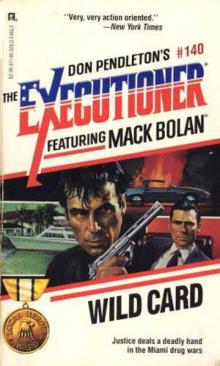 Wild Card
Wild Card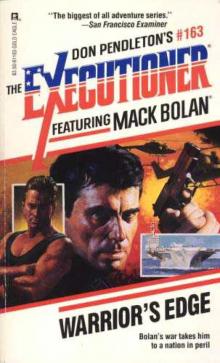 Warrior's Edge
Warrior's Edge Blood Vortex
Blood Vortex Lethal Vengeance
Lethal Vengeance Killing Kings
Killing Kings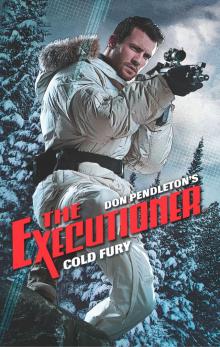 Cold Fury
Cold Fury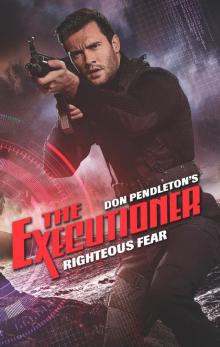 Righteous Fear
Righteous Fear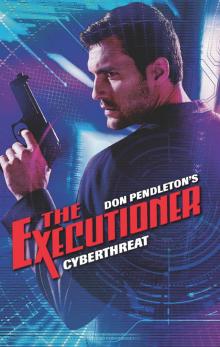 Cyberthreat
Cyberthreat Stealth Assassin
Stealth Assassin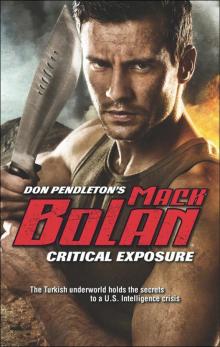 Critical Exposure
Critical Exposure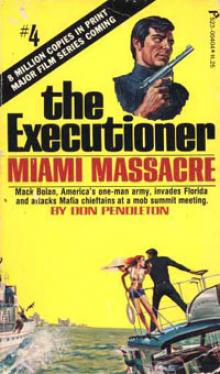 Miami Massacre te-4
Miami Massacre te-4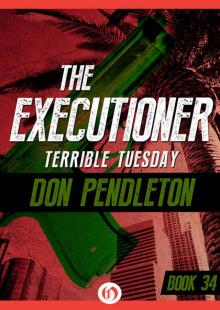 Terrible Tuesday
Terrible Tuesday Dying Art
Dying Art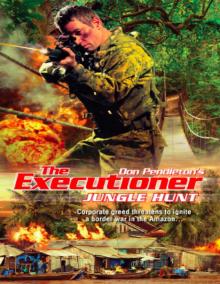 Jungle Hunt
Jungle Hunt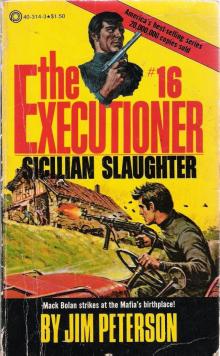 Sicilian Slaughter
Sicilian Slaughter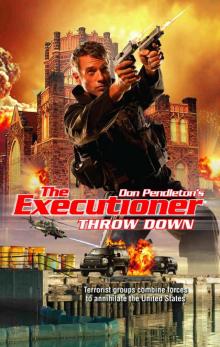 Throw Down
Throw Down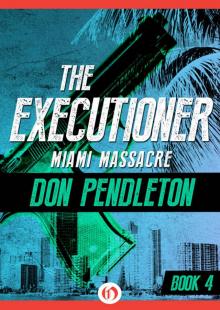 Miami Massacre
Miami Massacre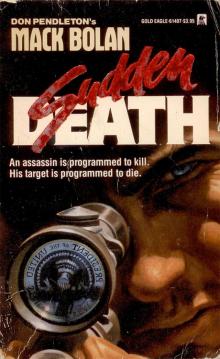 Sudden Death
Sudden Death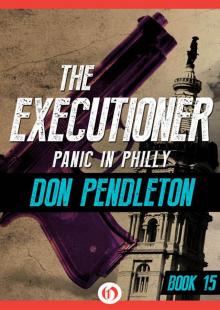 Panic in Philly
Panic in Philly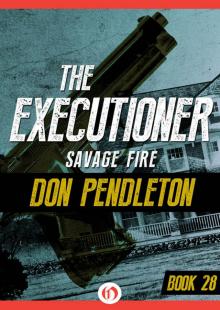 Savage Fire
Savage Fire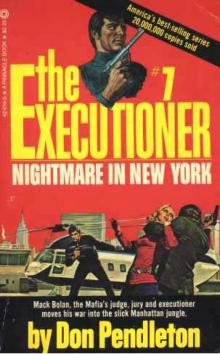 Nightmare in New York te-7
Nightmare in New York te-7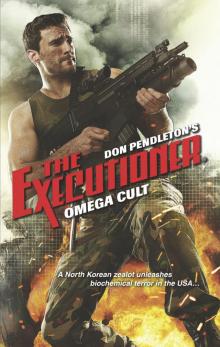 Omega Cult
Omega Cult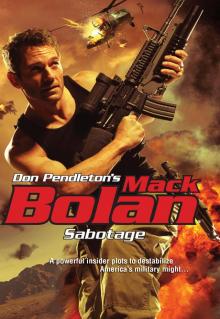 Sabotage
Sabotage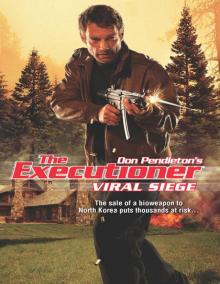 Viral Siege
Viral Siege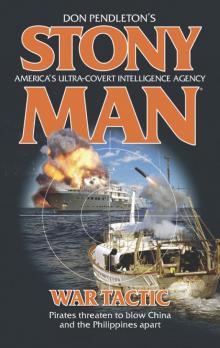 War Tactic
War Tactic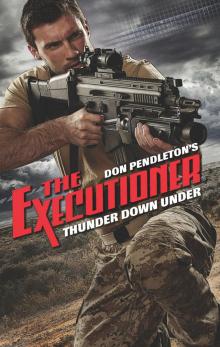 Thunder Down Under
Thunder Down Under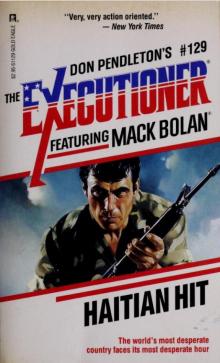 Haitian Hit
Haitian Hit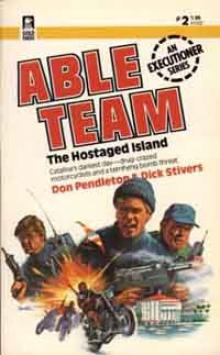 The Hostaged Island at-2
The Hostaged Island at-2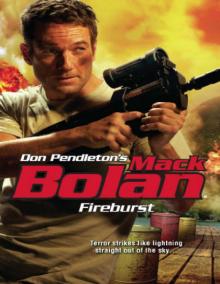 Fireburst
Fireburst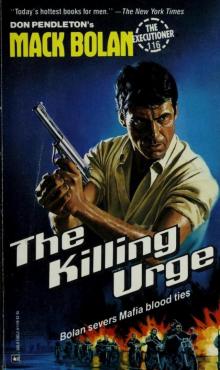 The Killing Urge
The Killing Urge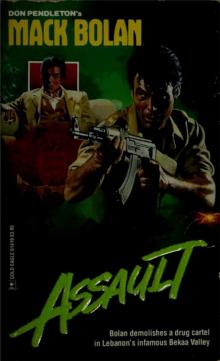 Assault
Assault Ashes To Ashes: Ashton Ford, Psychic Detective
Ashes To Ashes: Ashton Ford, Psychic Detective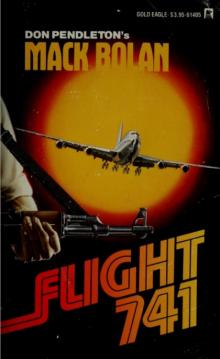 Flight 741
Flight 741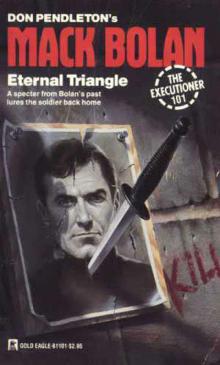 Eternal Triangle
Eternal Triangle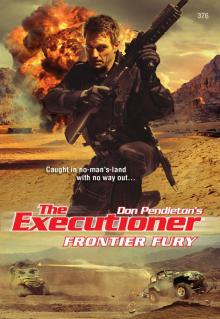 Frontier Fury
Frontier Fury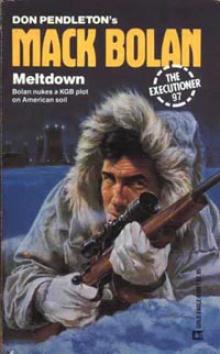 Meltdown te-97
Meltdown te-97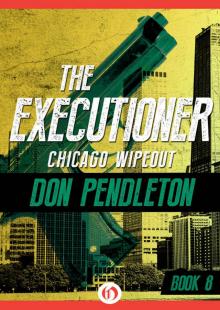 Chicago Wipeout
Chicago Wipeout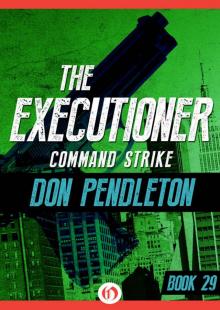 Command Strike
Command Strike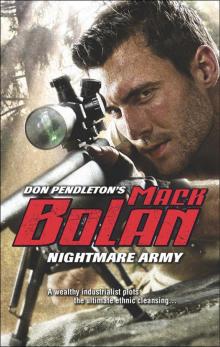 Nightmare Army
Nightmare Army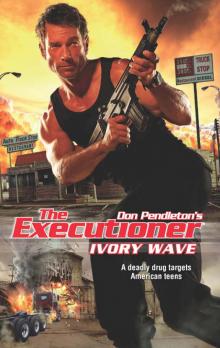 Ivory Wave
Ivory Wave Combat Machines
Combat Machines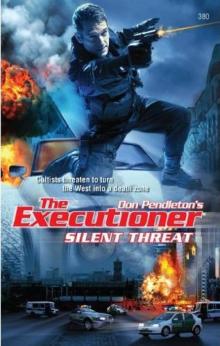 Silent Threat
Silent Threat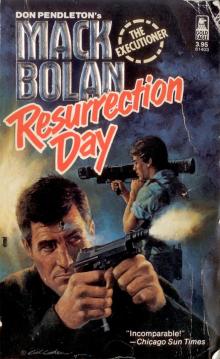 Resurrection Day
Resurrection Day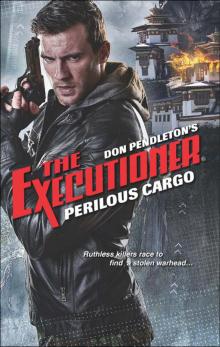 Perilous Cargo
Perilous Cargo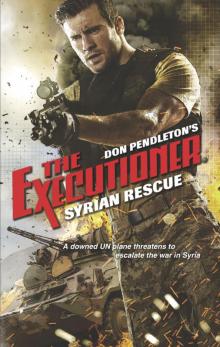 Syrian Rescue
Syrian Rescue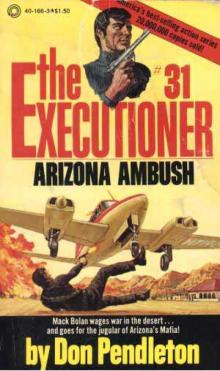 Arizona Ambush te-31
Arizona Ambush te-31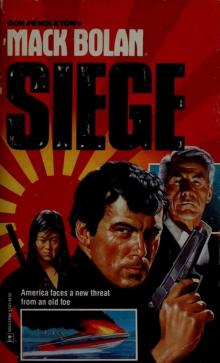 Siege
Siege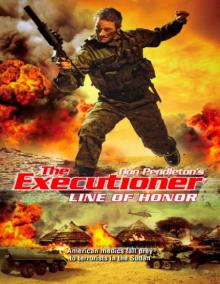 Line of Honor
Line of Honor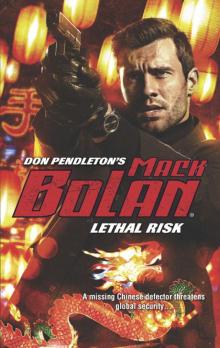 Lethal Risk
Lethal Risk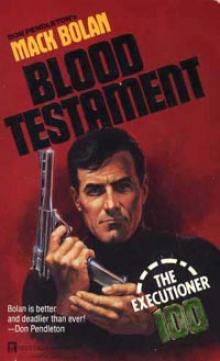 Blood Testament te-100
Blood Testament te-100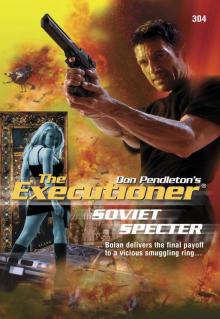 Soviet Specter
Soviet Specter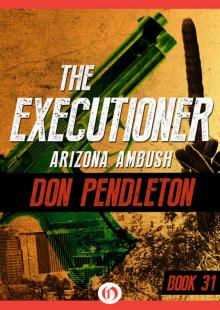 Arizona Ambush
Arizona Ambush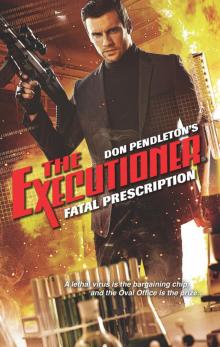 Fatal Prescription
Fatal Prescription Deep Recon
Deep Recon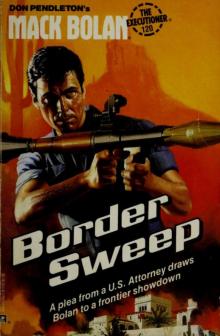 Border Sweep
Border Sweep Life to Life
Life to Life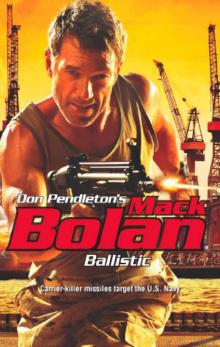 Ballistic
Ballistic Hellbinder
Hellbinder Time to Time: Ashton Ford, Psychic Detective (Ashton Ford Series Book 6)
Time to Time: Ashton Ford, Psychic Detective (Ashton Ford Series Book 6)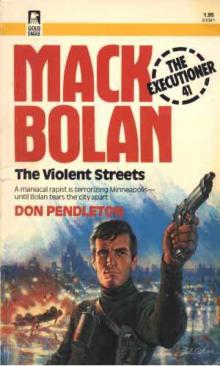 The Violent Streets te-41
The Violent Streets te-41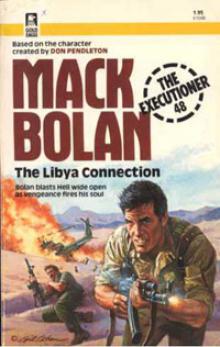 The Libya Connection te-48
The Libya Connection te-48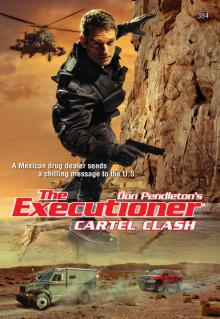 Cartel Clash
Cartel Clash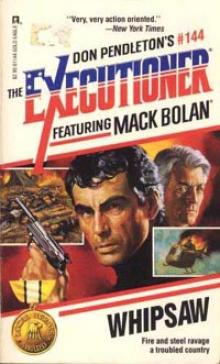 Whipsaw te-144
Whipsaw te-144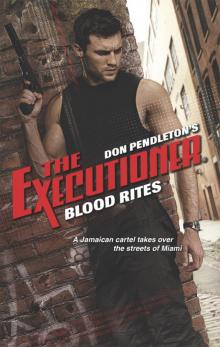 Blood Rites
Blood Rites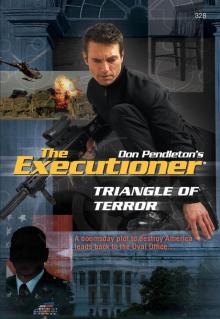 Triangle of Terror
Triangle of Terror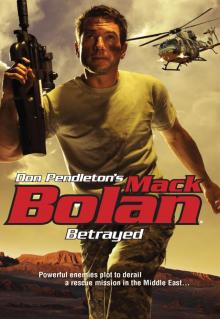 Betrayed
Betrayed San Diego Siege
San Diego Siege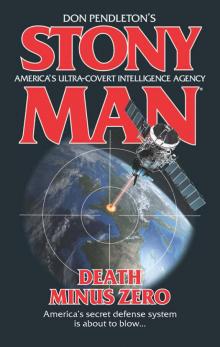 Death Minus Zero
Death Minus Zero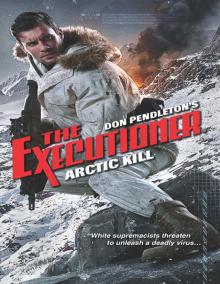 Arctic Kill
Arctic Kill Mind to Mind: Ashton Ford, Psychic Detective
Mind to Mind: Ashton Ford, Psychic Detective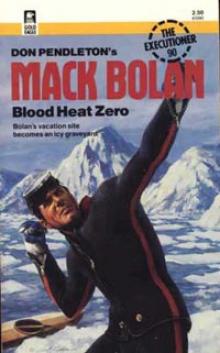 Blood Heat Zero te-90
Blood Heat Zero te-90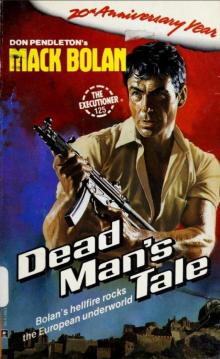 Dead Man's Tale
Dead Man's Tale Sunscream te-85
Sunscream te-85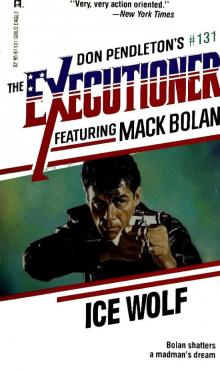 Ice Wolf
Ice Wolf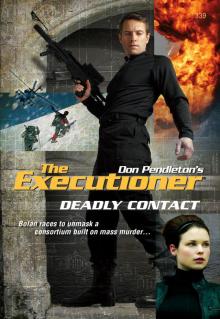 Deadly Contact
Deadly Contact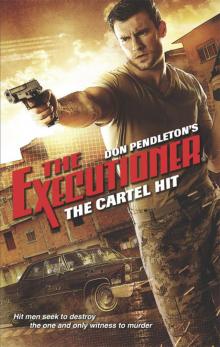 The Cartel Hit
The Cartel Hit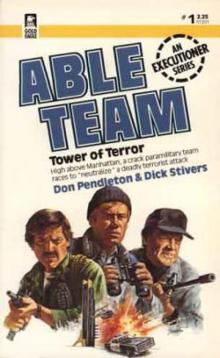 Tower of Terror at-1
Tower of Terror at-1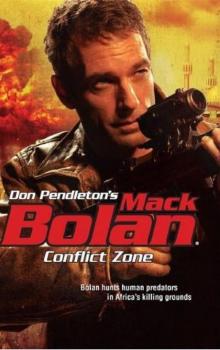 Conflict Zone
Conflict Zone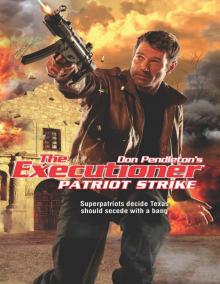 Patriot Strike
Patriot Strike Point Blank
Point Blank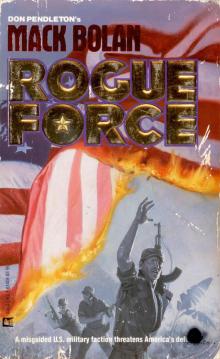 Rogue Force
Rogue Force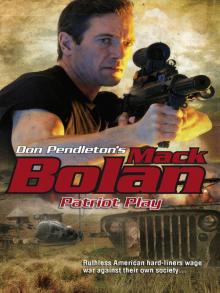 Patriot Play
Patriot Play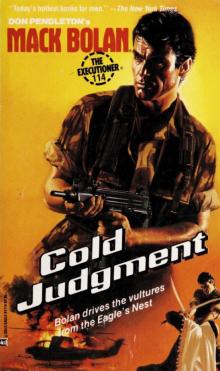 Cold Judgment
Cold Judgment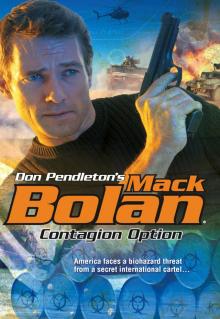 Contagion Option
Contagion Option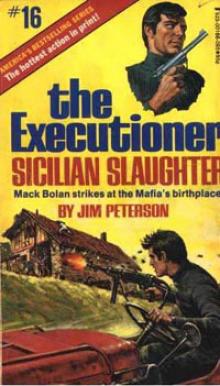 Sicilian Slaughter te-16
Sicilian Slaughter te-16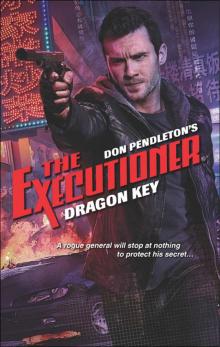 Dragon Key
Dragon Key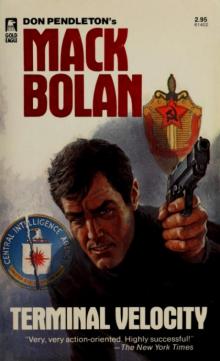 Terminal Velocity
Terminal Velocity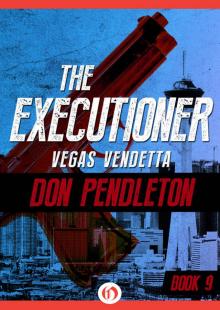 Vegas Vendetta
Vegas Vendetta Ashes To Ashes
Ashes To Ashes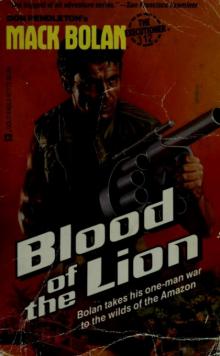 Blood of the Lion
Blood of the Lion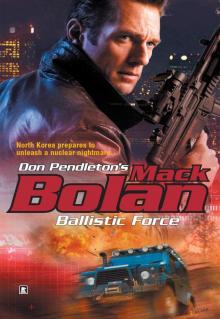 Ballistic Force
Ballistic Force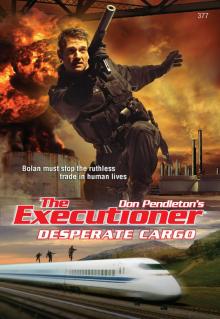 Desperate Cargo
Desperate Cargo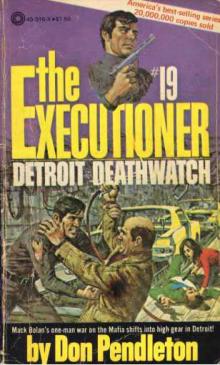 Detroit Deathwatch te-19
Detroit Deathwatch te-19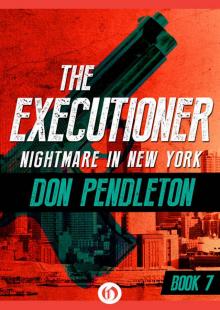 Nightmare in New York
Nightmare in New York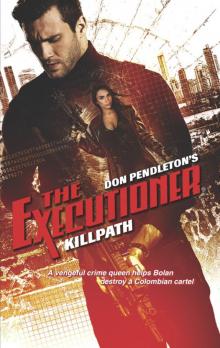 Killpath
Killpath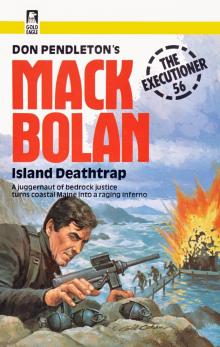 Executioner 056 - Island Deathtrap
Executioner 056 - Island Deathtrap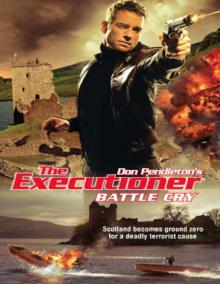 Battle Cry
Battle Cry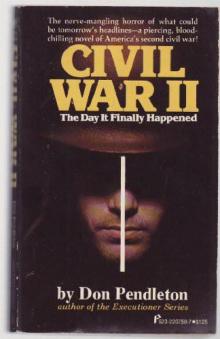 Don Pendleton - Civil War II
Don Pendleton - Civil War II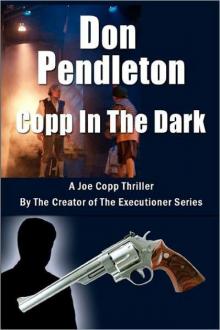 Copp In The Dark, A Joe Copp Thriller (Joe Copp Private Eye Series)
Copp In The Dark, A Joe Copp Thriller (Joe Copp Private Eye Series) China Crisis (Stony Man)
China Crisis (Stony Man)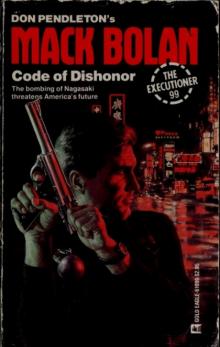 Code of Dishonor
Code of Dishonor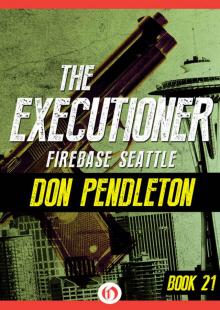 Firebase Seattle
Firebase Seattle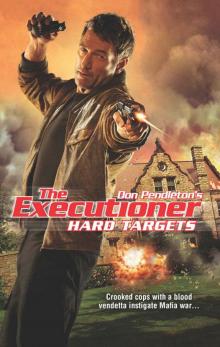 Hard Targets
Hard Targets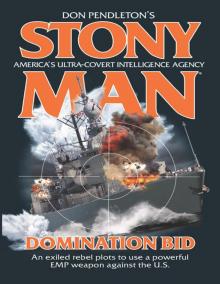 Domination Bid
Domination Bid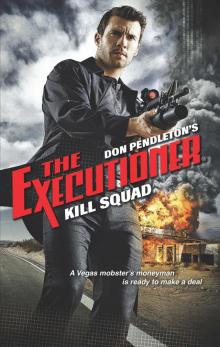 Kill Squad
Kill Squad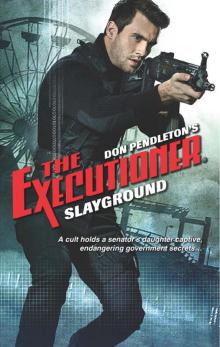 Slayground
Slayground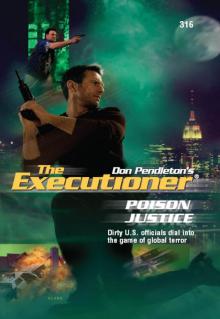 Poison Justice
Poison Justice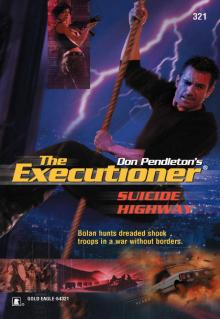 Suicide Highway
Suicide Highway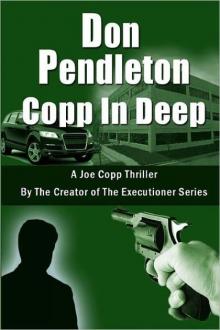 Copp In Deep, A Joe Copp Thriller (Joe Copp Private Eye Series)
Copp In Deep, A Joe Copp Thriller (Joe Copp Private Eye Series)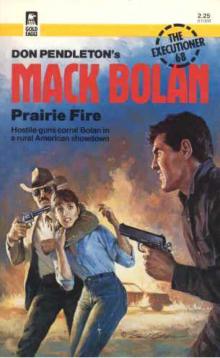 Prairie Fire
Prairie Fire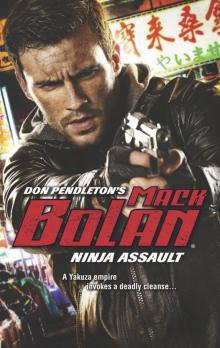 Ninja Assault
Ninja Assault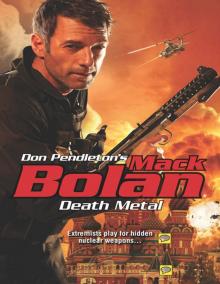 Death Metal
Death Metal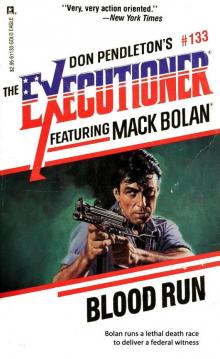 Blood Run
Blood Run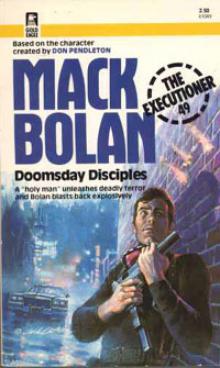 Doomsday Disciples te-49
Doomsday Disciples te-49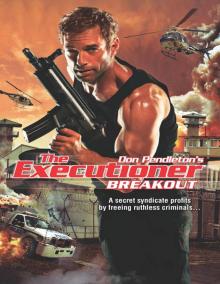 Breakout
Breakout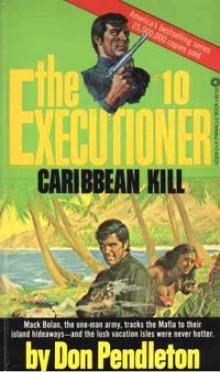 Caribbean Kill te-10
Caribbean Kill te-10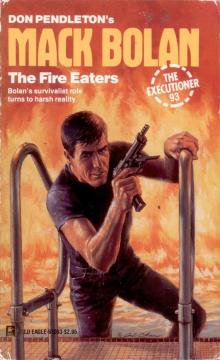 Fire Eaters
Fire Eaters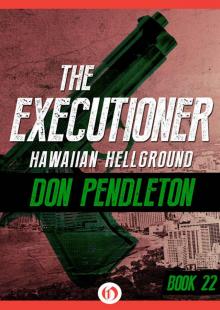 Hawaiian Hellground
Hawaiian Hellground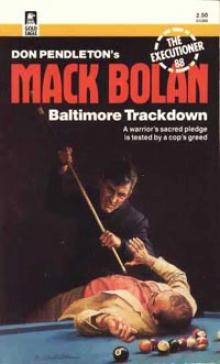 Baltimore Trackdown te-88
Baltimore Trackdown te-88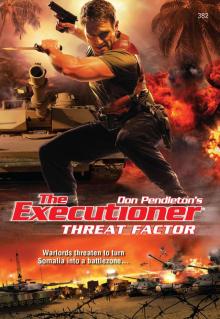 Threat Factor
Threat Factor Don Pendleton's Science Fiction Collection, 3 Books Box Set, (The Guns of Terra 10; The Godmakers; The Olympians)
Don Pendleton's Science Fiction Collection, 3 Books Box Set, (The Guns of Terra 10; The Godmakers; The Olympians)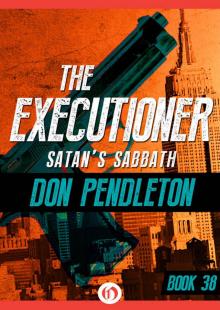 Satan’s Sabbath
Satan’s Sabbath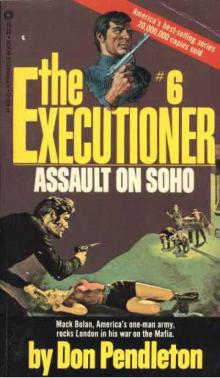 Assault on Soho te-6
Assault on Soho te-6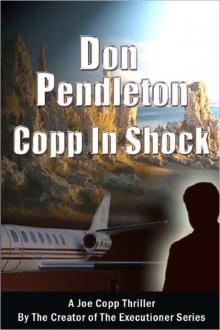 Copp In Shock, A Joe Copp Thriller (Joe Copp Private Eye Series)
Copp In Shock, A Joe Copp Thriller (Joe Copp Private Eye Series)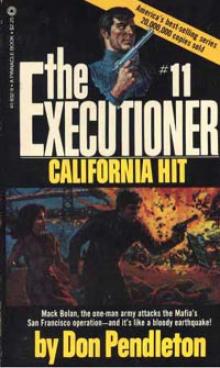 California Hit te-11
California Hit te-11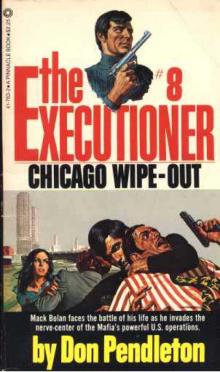 Chicago Wipe-Out te-8
Chicago Wipe-Out te-8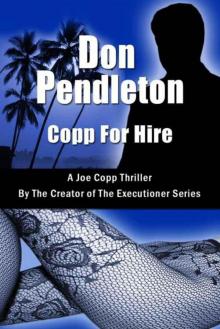 Copp For Hire, A Joe Copp Thriller (Joe Copp Private Eye Series)
Copp For Hire, A Joe Copp Thriller (Joe Copp Private Eye Series)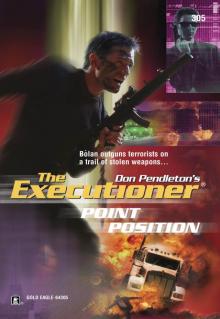 Point Position
Point Position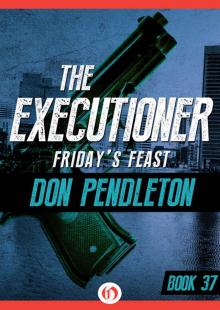 Friday’s Feast
Friday’s Feast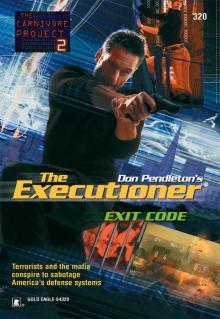 Exit Code
Exit Code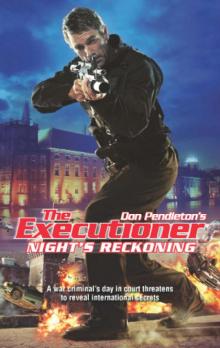 Night's Reckoning
Night's Reckoning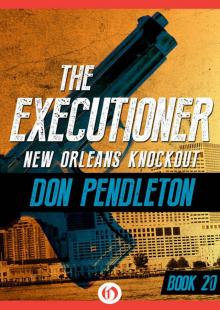 New Orleans Knockout
New Orleans Knockout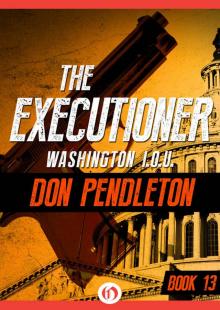 Washington I.O.U.
Washington I.O.U.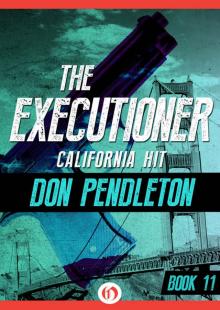 California Hit
California Hit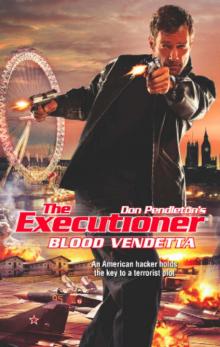 Blood Vendetta
Blood Vendetta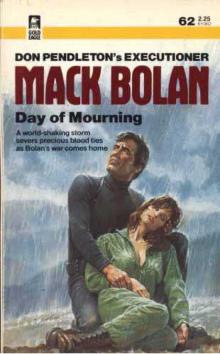 Day of Mourning te-62
Day of Mourning te-62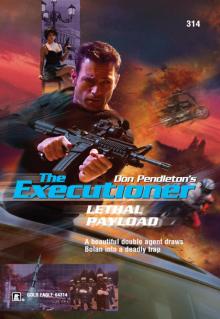 Lethal Payload
Lethal Payload Boston Blitz
Boston Blitz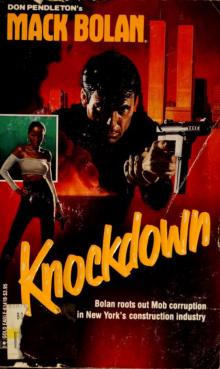 Knockdown
Knockdown Blood Sport te-46
Blood Sport te-46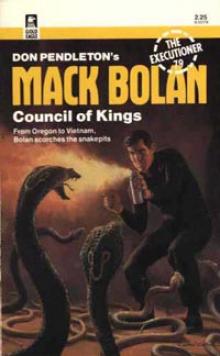 Council of Kings te-79
Council of Kings te-79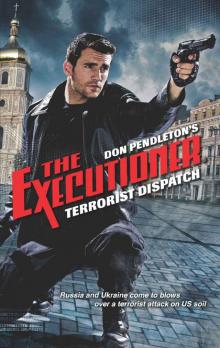 Terrorist Dispatch (Executioner)
Terrorist Dispatch (Executioner)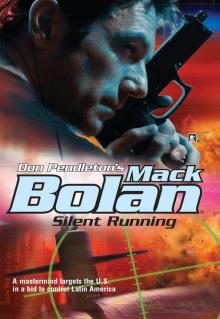 Silent Running
Silent Running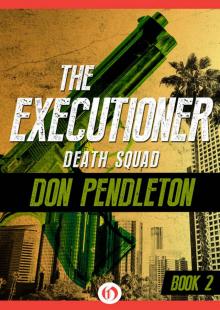 Death Squad
Death Squad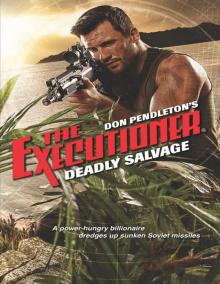 Deadly Salvage
Deadly Salvage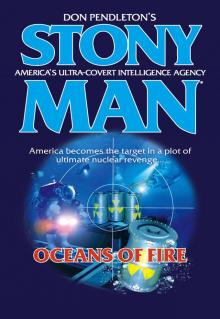 Oceans of Fire
Oceans of Fire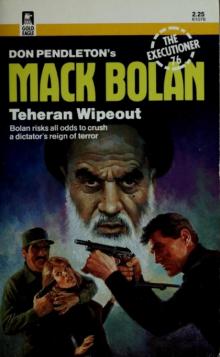 Teheran Wipeout
Teheran Wipeout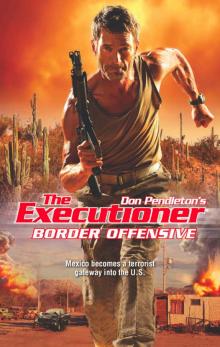 Border Offensive
Border Offensive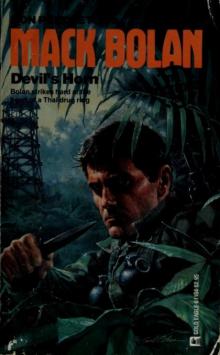 Devil's Horn
Devil's Horn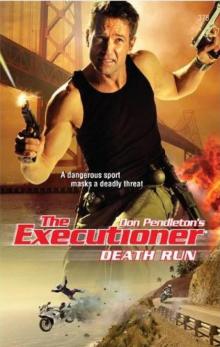 Death Run
Death Run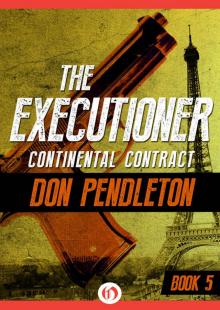 Continental Contract
Continental Contract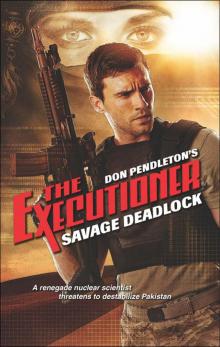 Savage Deadlock
Savage Deadlock Eye to Eye: Ashton Ford, Psychic Detective
Eye to Eye: Ashton Ford, Psychic Detective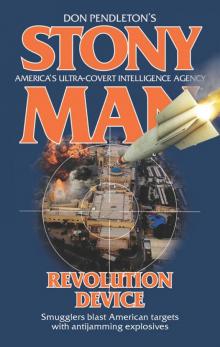 Revolution Device
Revolution Device Heart to Heart: Ashton Ford, Psychic Detective
Heart to Heart: Ashton Ford, Psychic Detective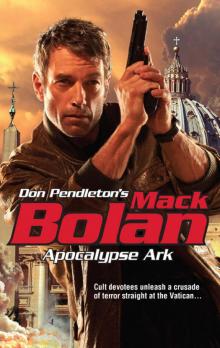 Apocalypse Ark
Apocalypse Ark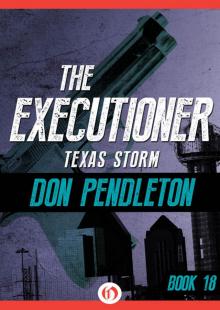 Texas Storm
Texas Storm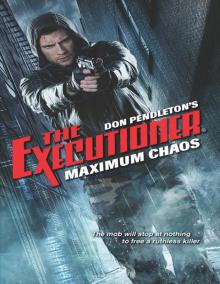 Maximum Chaos
Maximum Chaos Sensor Sweep
Sensor Sweep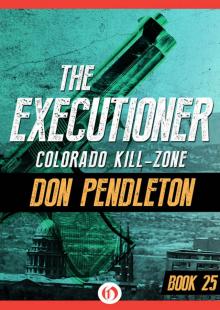 Colorado Kill-Zone
Colorado Kill-Zone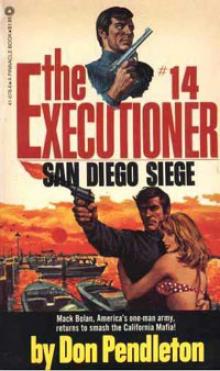 San Diego Siege te-14
San Diego Siege te-14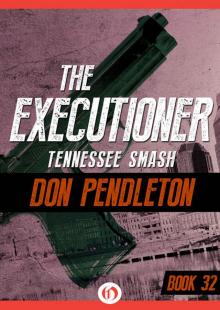 Tennessee Smash
Tennessee Smash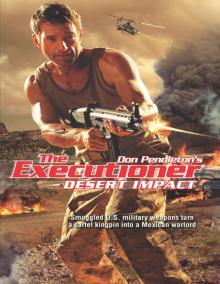 Desert Impact
Desert Impact Fire in the Sky
Fire in the Sky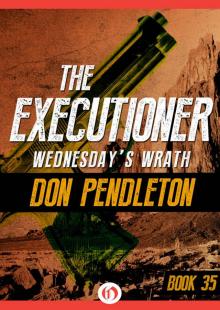 Wednesday’s Wrath
Wednesday’s Wrath Super Bolan - 001 - Stony Man Doctrine
Super Bolan - 001 - Stony Man Doctrine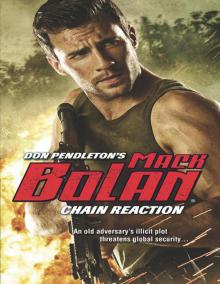 Chain Reaction
Chain Reaction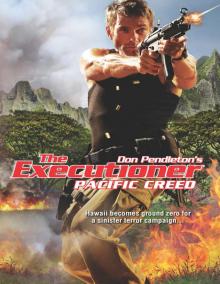 Pacific Creed
Pacific Creed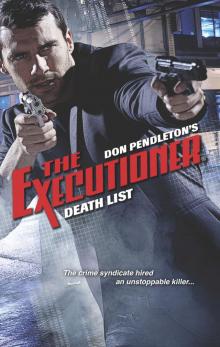 Death List
Death List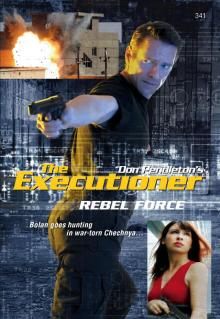 Rebel Force
Rebel Force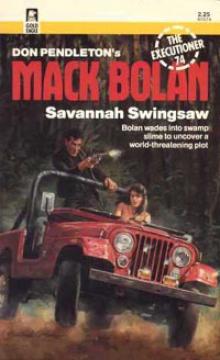 Savannah Swingsaw te-74
Savannah Swingsaw te-74 Heart to Heart
Heart to Heart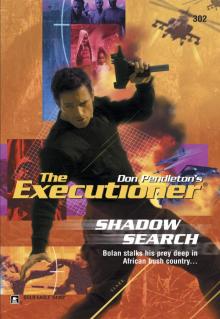 Shadow Search
Shadow Search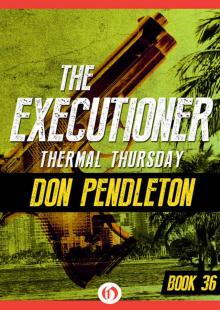 Thermal Thursday
Thermal Thursday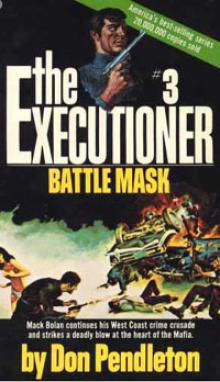 Battle Mask te-3
Battle Mask te-3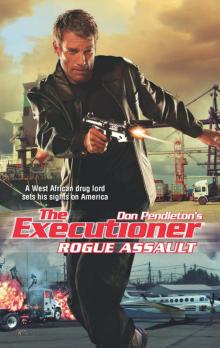 Rogue Assault
Rogue Assault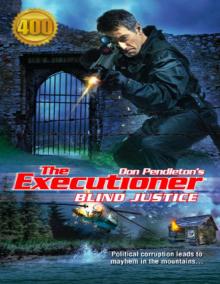 Blind Justice
Blind Justice Cold Fusion
Cold Fusion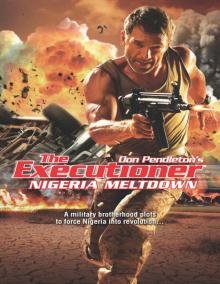 Nigeria Meltdown
Nigeria Meltdown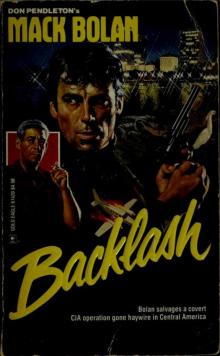 Backlash
Backlash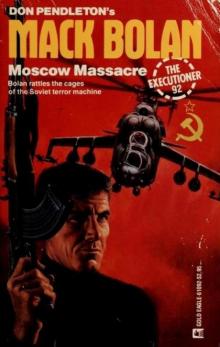 Moscow Massacre
Moscow Massacre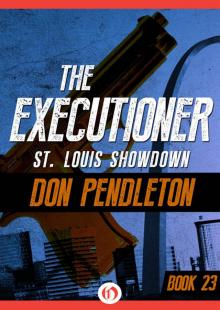 St. Louis Showdown
St. Louis Showdown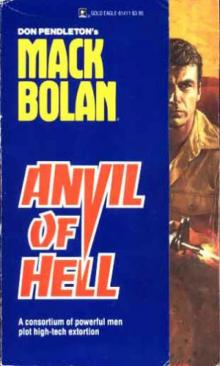 Anvil of Hell
Anvil of Hell Life to Life: Ashton Ford, Psychic Detective
Life to Life: Ashton Ford, Psychic Detective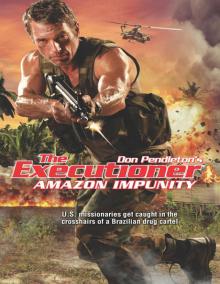 Amazon Impunity
Amazon Impunity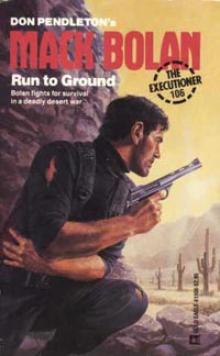 Run to Ground te-106
Run to Ground te-106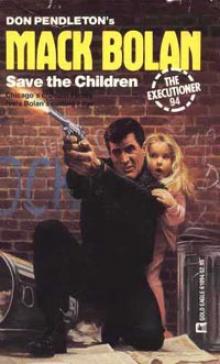 Save the Children te-94
Save the Children te-94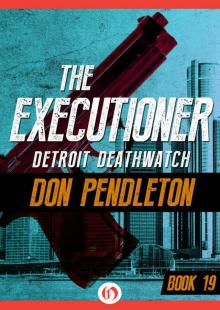 Detroit Deathwatch
Detroit Deathwatch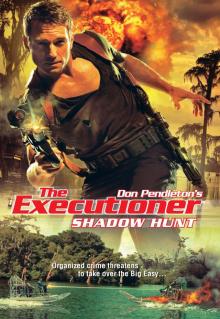 Shadow Hunt
Shadow Hunt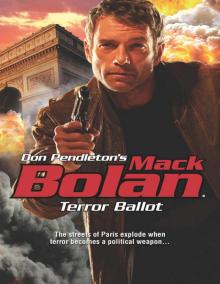 Terror Ballot
Terror Ballot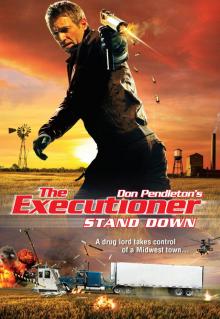 Stand Down
Stand Down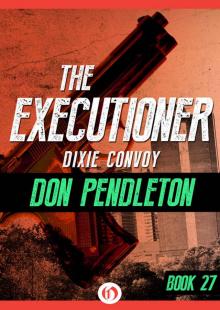 Dixie Convoy
Dixie Convoy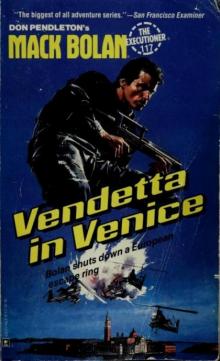 Vendetta in Venice
Vendetta in Venice War Against the Mafia
War Against the Mafia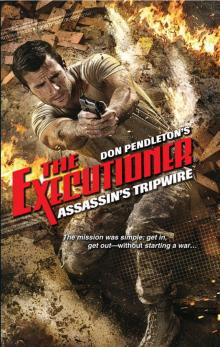 Assassin's Tripwire
Assassin's Tripwire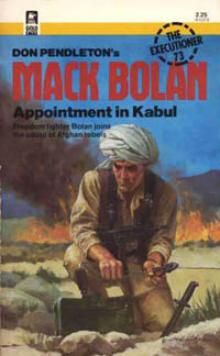 Appointment in Kabul te-73
Appointment in Kabul te-73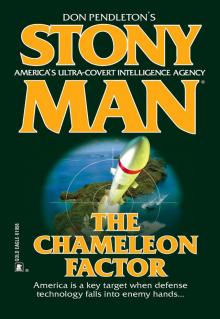 The Chameleon Factor
The Chameleon Factor Pirate Offensive
Pirate Offensive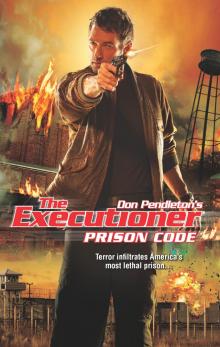 Prison Code
Prison Code Firebase Seattle te-21
Firebase Seattle te-21 Ground Zero
Ground Zero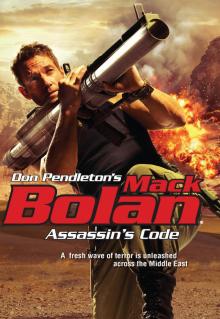 Assassin's Code
Assassin's Code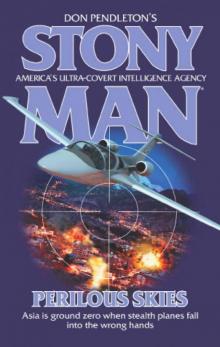 Perilous Skies (Stony Man)
Perilous Skies (Stony Man) Toxic Terrain
Toxic Terrain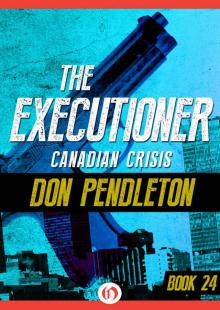 Canadian Crisis
Canadian Crisis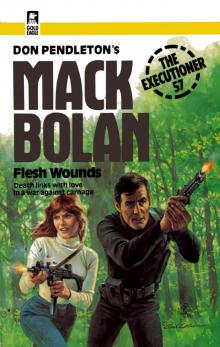 Executioner 057 - Flesh Wounds
Executioner 057 - Flesh Wounds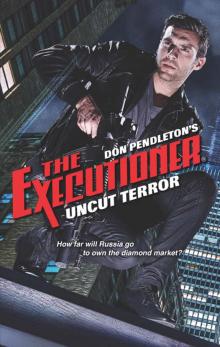 Uncut Terror
Uncut Terror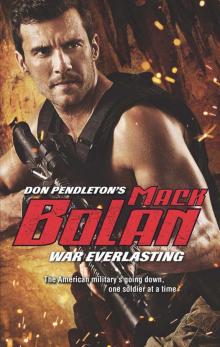 War Everlasting (Superbolan)
War Everlasting (Superbolan)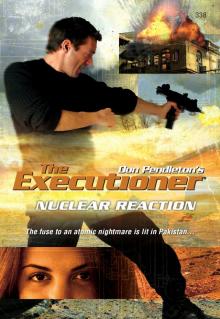 Nuclear Reaction
Nuclear Reaction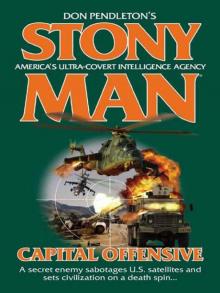 Capital Offensive (Stony Man)
Capital Offensive (Stony Man) Beirut Payback te-67
Beirut Payback te-67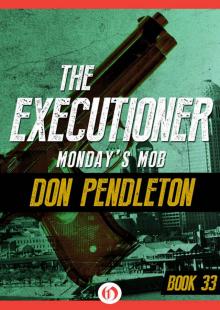 Monday’s Mob
Monday’s Mob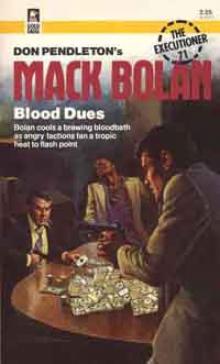 Blood Dues te-71
Blood Dues te-71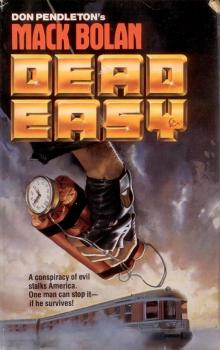 Dead Easy
Dead Easy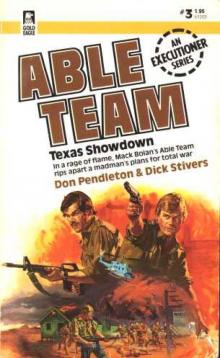 Texas Showdown at-3
Texas Showdown at-3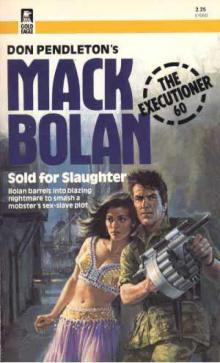 Sold for Slaughter
Sold for Slaughter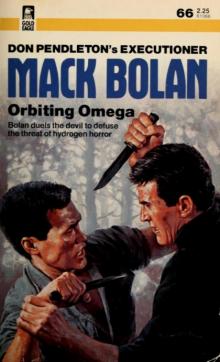 Orbiting Omega
Orbiting Omega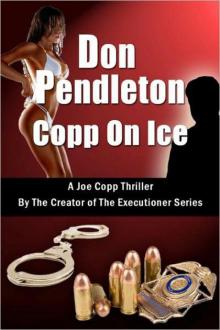 Copp On Ice, A Joe Copp Thriller (Joe Copp Private Eye Series)
Copp On Ice, A Joe Copp Thriller (Joe Copp Private Eye Series) Rebel Blast
Rebel Blast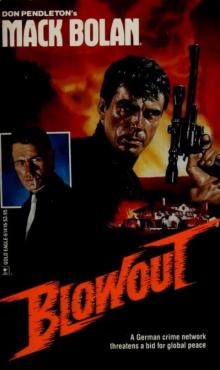 Blowout
Blowout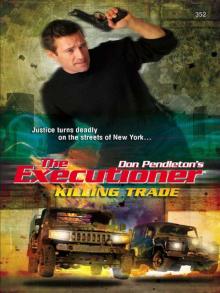 Killing Trade
Killing Trade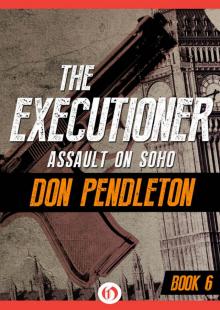 Assault on Soho
Assault on Soho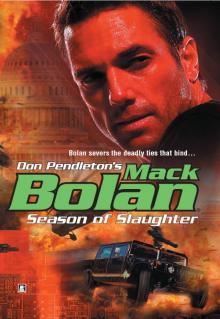 Season of Slaughter
Season of Slaughter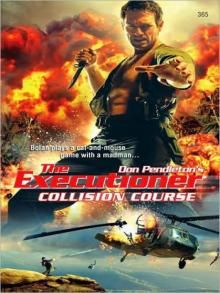 Collision Course
Collision Course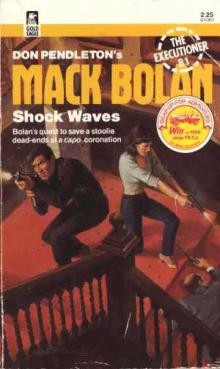 Shock Waves
Shock Waves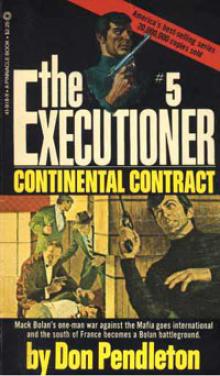 Continental Contract te-5
Continental Contract te-5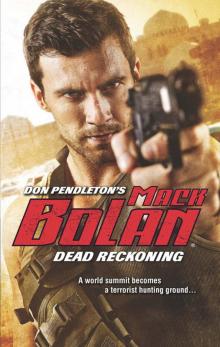 Dead Reckoning
Dead Reckoning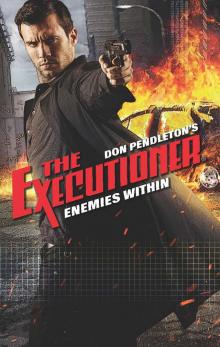 Enemies Within
Enemies Within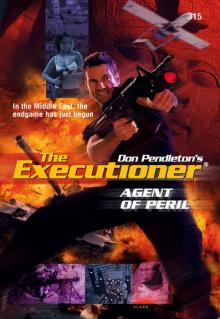 Agent of Peril
Agent of Peril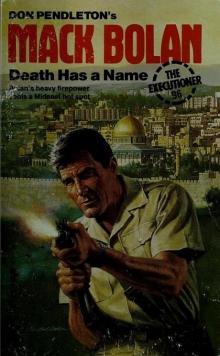 Death Has a Name
Death Has a Name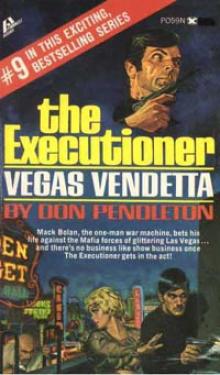 Vegas Vendetta te-9
Vegas Vendetta te-9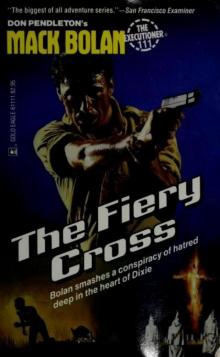 The Fiery Cross
The Fiery Cross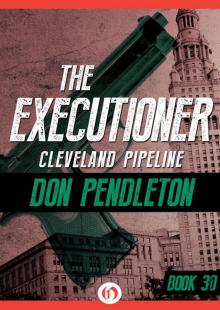 Cleveland Pipeline
Cleveland Pipeline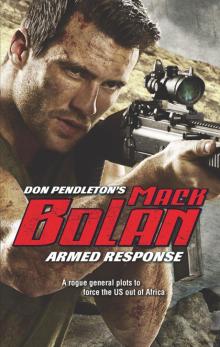 Armed Response
Armed Response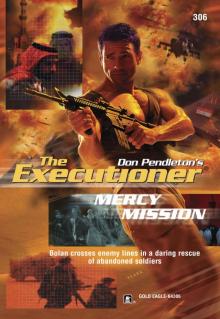 Mercy Mission
Mercy Mission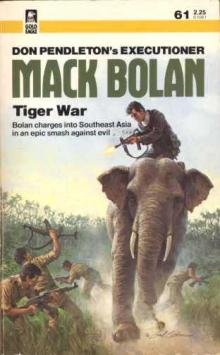 Tiger War te-61
Tiger War te-61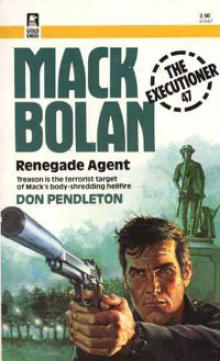 Renegade Agent te-47
Renegade Agent te-47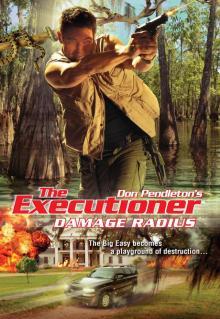 Damage Radius
Damage Radius Eye to Eye
Eye to Eye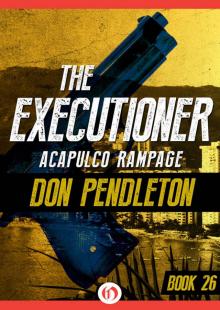 Acapulco Rampage
Acapulco Rampage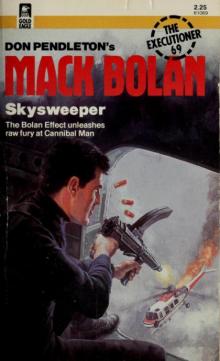 Skysweeper
Skysweeper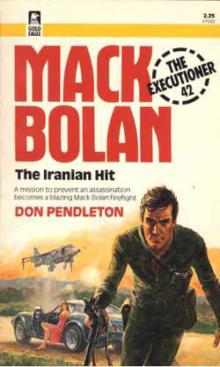 The Iranian Hit te-42
The Iranian Hit te-42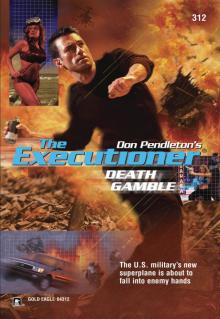 Death Gamble
Death Gamble Rebel Trade
Rebel Trade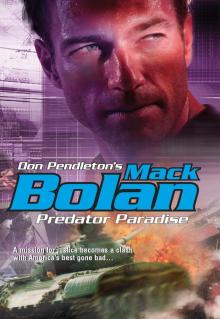 Predator Paradise
Predator Paradise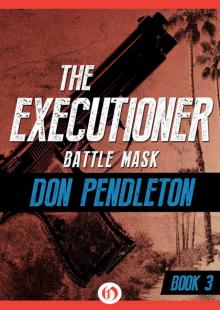 Battle Mask
Battle Mask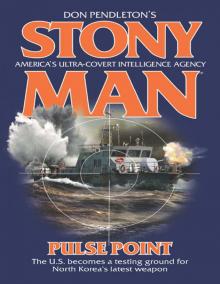 Pulse Point
Pulse Point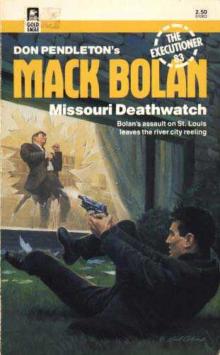 Missouri Deathwatch
Missouri Deathwatch Blood Tide
Blood Tide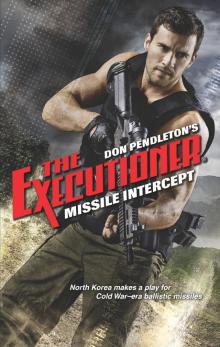 Missile Intercept
Missile Intercept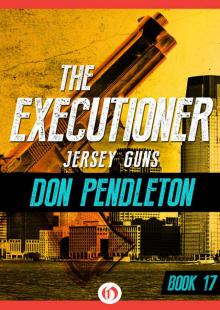 Jersey Guns
Jersey Guns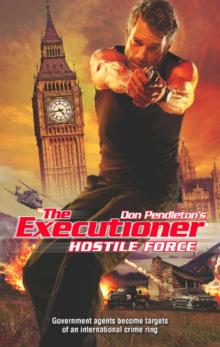 Hostile Force
Hostile Force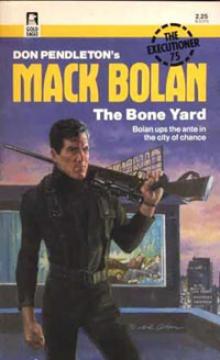 The Bone Yard te-75
The Bone Yard te-75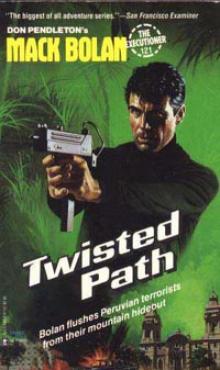 Twisted Path te-121
Twisted Path te-121 Mind to Mind
Mind to Mind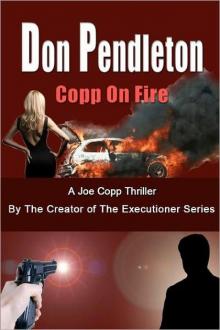 Copp On Fire, A Joe Copp Thriller (Joe Copp, Private Eye Series)
Copp On Fire, A Joe Copp Thriller (Joe Copp, Private Eye Series)